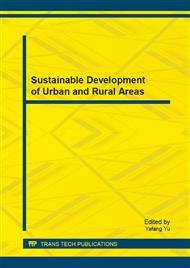[1]
Powers T C. A Working Hypothesis for FurtherStudies of Frost Resistance of Concrete. ACI Journal,1945(41):245~272.
Google Scholar
[2]
Powers T C,Helmuth R A. Theory of Volume Change in Hardend Portland Cement Paste During Freezing. Proceedings,Highway Research Board,1953(32):285~297.
Google Scholar
[3]
Powers T C. Freezing Effect in Concrete. In:Scholer C F,Durability of Concrete. Detroit:American Concrete Institute,(1975).
Google Scholar
[4]
Fagerlund G. The Significance of Critical Degree of Saturation at Freezing of Pore and Brittle Materials. In:Scholer C F,Durability of Concrete. Detroit:American Concrete Institute,(1975).
Google Scholar
[5]
Pigeon M et al. Critical Air Void Spacing Factors for Concrete as Sumitted to Slow Freeze-Thaw Cycle. ACI Journal,1981(4):282~291.
DOI: 10.14359/6926
Google Scholar
[6]
Mingshu Tang. The Frost Resistance of Concrete. Portland Department of Nanjing Institute,(1984).
Google Scholar
[7]
Bazant Z P et al. Mathematical Model for Freeze-Thaw Durability of Concrete. Journal of the American Ceramic Society,1988(9):776~783.
DOI: 10.1111/j.1151-2916.1988.tb06413.x
Google Scholar
[8]
Hao Cai. Prediction model of frost resistance of concrete. [Doctoral Dissertation]. Beijing,The Civil Engineering Department of Tsinghua University,(1998).
Google Scholar
[9]
Xu Liping,WU Xueli,Huang Shiyuan. Design of Frost Resistace of Concrete. Journal of Shanghai Institute of Building Materials,1993(2):112~123.
Google Scholar
[10]
Jinyu Li,Zhenggang Deng. Quantitative Design on the Frost-resistance of Concrete. Concrete,2000(12):61~65.
Google Scholar
[11]
LIU Rong-gui,FU Kai,YAN Ting-cheng. The research of freeze-thaw damage of prestressed concrete based on damage mechanics. Concrete,2007(1):1~3.
Google Scholar


